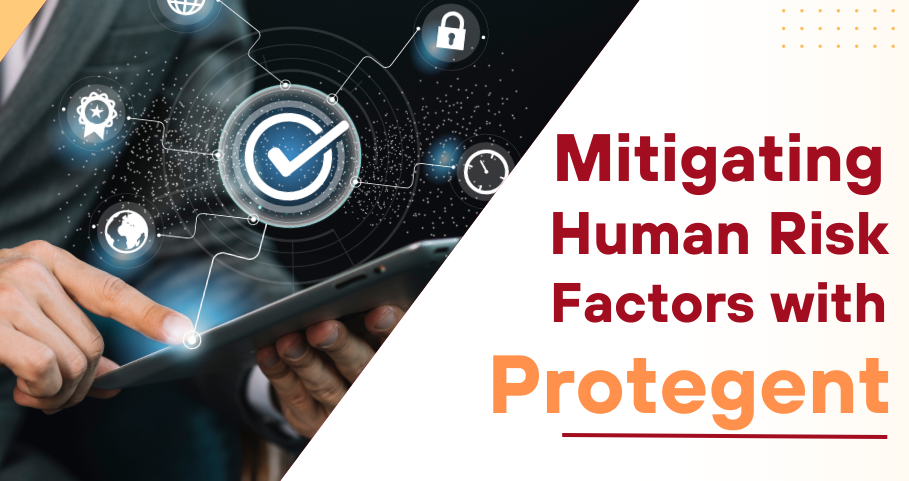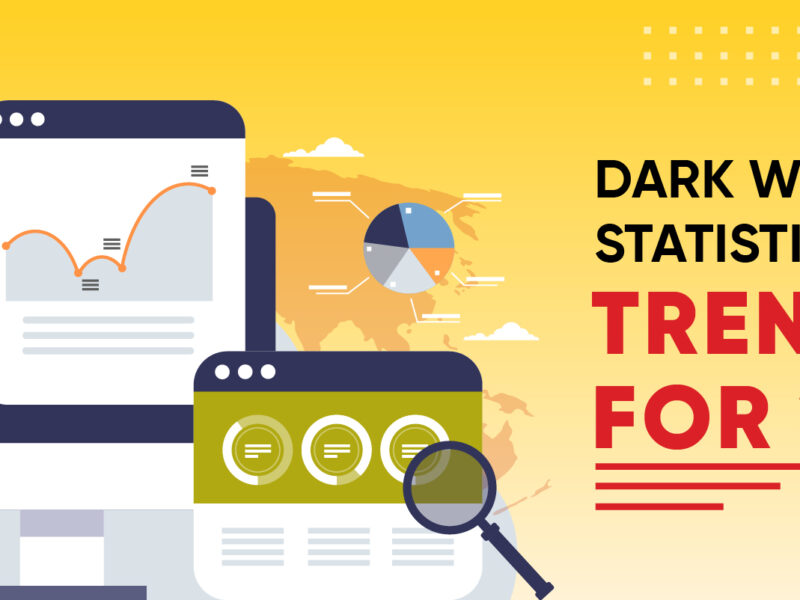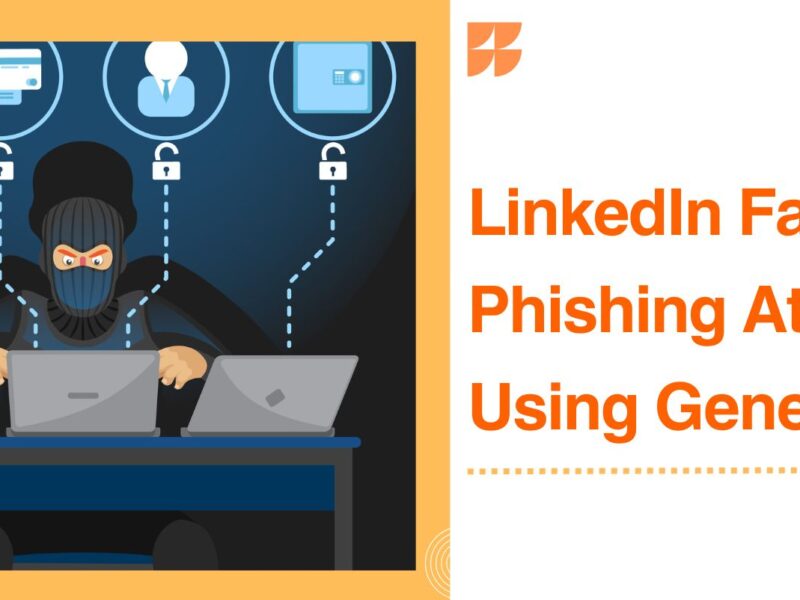
Mitigating Human-Induced Risks in Cyber Security Breaches
While possessing state-of-the-art security technology is crucial, the reality is that even the most advanced systems can be compromised if a user falls prey to a malicious email link, allows an unauthorized person to enter premises, or opts for a weak password like ‘1234’. These seemingly innocuous actions unknowingly expose your organization to potential cybersecurity breaches. The undeniable truth is that the human risk factor constitutes the primary vulnerability point in cyber security, contributing to 90% of all security breach incidents. In essence, your personnel becomes the “weakest link” in your organization’s security chain.
In an era dominated by digital advancements, the battle against cyber threats hinges significantly on addressing the human factor. As technology evolves, the human element remains a critical vulnerability. To fortify our defenses and prevent security breaches, it is imperative to focus on eliminating human errors.
Understanding the Human Risk Factor
While technological solutions play a pivotal role in cyber defense, individual actions and decisions within an organization often serve as the linchpin of protection against potential breaches. Whether it’s falling victim to phishing emails, using weak passwords, or unintentionally providing access to unauthorized entities, human errors contribute substantially to the overall risk landscape.
Minimize human risk factors by fostering behavioral change
The optimal approach to addressing this issue involves instigating behavioral change and instilling a security-oriented culture throughout your organization. It is essential to devise methods that motivate users to reduce their engagement in high-risk behaviors, transforming security awareness into a reflexive mindset. By achieving this, users can develop into your organization’s “strongest link,” playing a pivotal role in your cyber security defense strategy.
But how can this be accomplished?
A continuous and systematic approach to altering behavior
Anticipating compliance with a set of rules proves ineffective. Similarly, sporadic 15-minute cyber security training sessions and annual hour-long computer exercises yield limited results. While traditional cyber security awareness training may fulfill compliance requirements, it falls short of maintaining organizational protection due to the absence of a long-term strategy.
To genuinely transform behaviors and cultivate a security culture, a thorough program tailored to your organization’s distinct needs and goals is imperative. The attainment of this objective necessitates the application of a framework comprising specific, well-defined steps, and opting for cybersecurity measures like installing Antivirus Software is essential.
How does a security awareness framework measure its effectiveness?
Success is ensured when you perceive security awareness not as a singular project with a clear beginning and finish, but rather as an ongoing program and process.
In line with this perspective, the most prosperous programs encompass a series of multiple campaigns launched over time. Your program should harbor long-term strategic objectives, with each campaign designed to fulfill specific goals.
Crucially, these programs adhere to a methodical framework structured around a sequence of key steps:
- Review
- Blueprint
- Implement
- Assess
- Enhance
The absence of an evidence-based security awareness framework makes it challenging to alter people’s risky behaviors. A framework is meticulously crafted to consider all aspects, including how individuals learn, embrace, and sustain new habits. This, in turn, cultivates a culture of security awareness and significantly diminishes human-related security breaches.
Step 1 – Review
Every organization possesses distinct characteristics, and yours is no exception. Each aspect is unique, from organizational culture and risk factors to staff motivation levels, compliance obligations, security awareness program maturity, and deployment capability. Therefore, when considering a security awareness program, it is prudent to choose a solution that can be customized and tailored to cater to the specific, real-world needs of your organization.
Step 2 – A blueprint
Following the completion of your analysis, the subsequent step involves planning your cybersecurity awareness program.
Effective planning requires time and effort. However, dedicating effort to meticulous planning is crucial to the success of your security awareness program. If you build a security awareness program without a well-thought-out plan, the results may be inconsistent, and you are likely to fall short of achieving behavioral change within your organization.
Planning provides the opportunity to foresee and navigate potential obstacles, maintain alignment with your objectives, and adhere to designated timelines and budget constraints.
Step 3: Implement
You’ve done every I and crossed all the Ts. You are now prepared to take off!
Do all of your pre-testing just before kickoff to ensure there are no kinks in the system. You want your launch day to be stress-free. Go ahead and launch when testing is finished, then celebrate a job well done.
But keep in mind that deployment shouldn’t stop there. To generate excitement about your program and increase participation rates, you want to interact with people and connect with them in engaging ways. As a result, you must conduct a reinforcement phase both during and following your deployment. You will be able to accomplish the goals you have set for your security awareness campaign by doing this.
Step 4: Assess
You want to know how your security awareness program is doing now that it has been implemented. After all, you are only going through the motions if you are unsure of its effectiveness in lowering risk behaviors.
Step 5: Enhance
Applying a framework-a continuous methodical approach results in lowering risky behaviors over time. By using the optimization process, you can determine what is effective and ineffective so that you can improve upon the previous campaign with the following one.
It’s critical to act upon your findings. Continue to update. Continue to get better. That is how cyber security knowledge enters and remains at the forefront of your organization.
Protegent Antivirus – A Shield against Human-Induced Threats
Enter Protegent Antivirus, a robust cybersecurity solution that helps combat external threats but also reduces vulnerabilities arising from human actions. Let’s explore how Protegent plays a pivotal role in safeguarding against human risk.
1. Proactive Threat Detection: Protegent employs advanced threat detection mechanisms that extend beyond identifying known malware. Its proactive approach involves heuristic analysis, behavior-based detection, and real-time monitoring to catch potential threats before they are exploited by human errors.
2. Phishing Protection: A significant portion of cyber threats begins with phishing attacks that trick users into revealing sensitive information. Protegent’s advanced algorithms recognize and block phishing attempts, providing a crucial layer of defense against human susceptibility to deceptive tactics.
3. Password Management: Human tendencies to use weak passwords or reuse them across multiple accounts create substantial security vulnerabilities. Protegent includes robust password management features, which encourage users to use complex and unique passwords for enhanced protection.
4. Awareness and Education: Beyond technical defenses, Protegent emphasizes user awareness and education. Regular updates and alerts educate users about potential threats, cultivating a cybersecurity-conscious mindset that protects against human-induced risks.
5. Endpoint Security: With the increasing prevalence of remote work, protecting individual devices becomes paramount. Protegent ensures comprehensive endpoint security, safeguarding devices against malware, unauthorized access, and other potential threats resulting from human actions.
Conclusion – Empowering Humans, Strengthening Cybersecurity
Reducing the human risk factor in cybersecurity is not about blaming individuals; it’s about empowering them with the right tools and knowledge. Protegent Antivirus serves as a shield, providing a comprehensive defense against cyber threats while actively addressing human-caused vulnerabilities.
In the evolving landscape of cyber security, Protegent Antivirus not only strengthens digital defenses but also fosters a collaborative approach where humans and technology work hand in hand to build a more resilient and secure online ecosystem. As we navigate the digital frontier, let Protegent be the guardian that minimizes the human risk factor and ensures a safer online experience for all.




